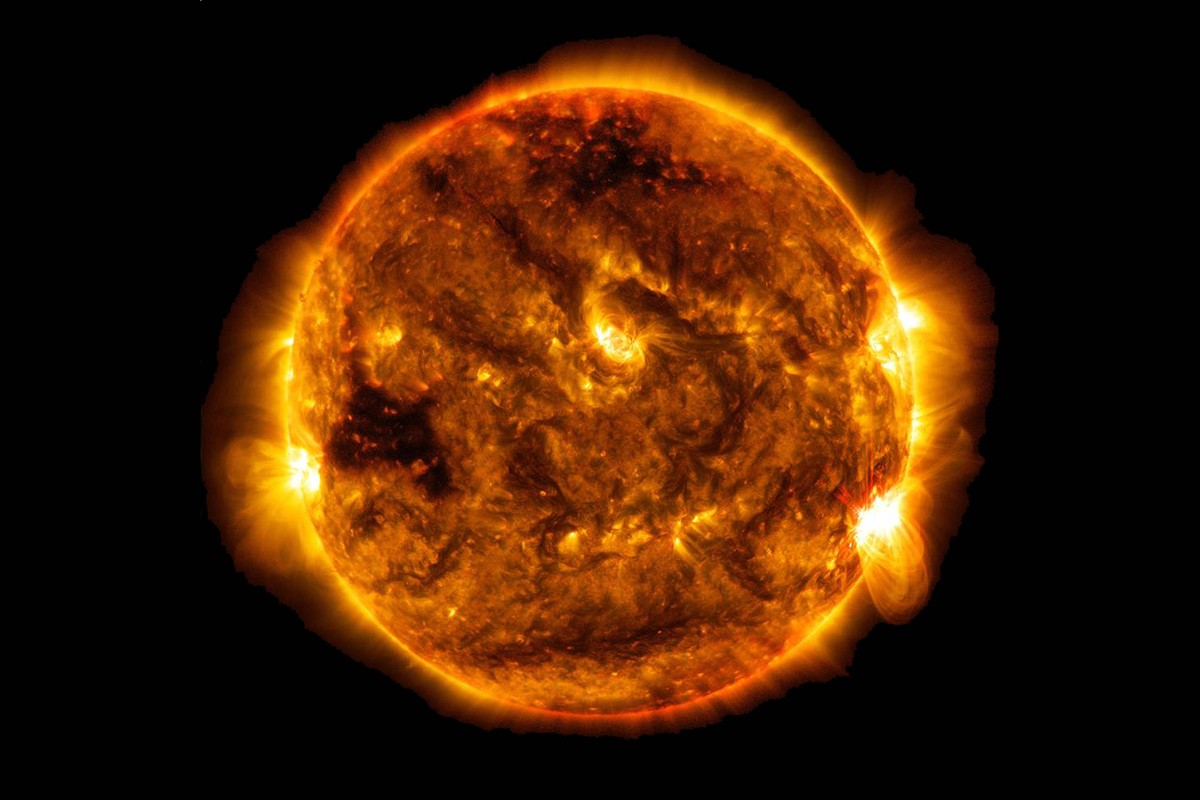Our Sun, the star at the heart of our solar system, may seem like an ordinary star, but it is truly colossal when compared to our home planet, Earth. It dominates our solar system in size and mass, holding a staggering 99.8% of the solar system’s total mass. This means all the planets, asteroids, comets, and other celestial bodies combined only make up a tiny fraction of what the Sun is.
To really grasp just How Big The Sun Is Compared To Earth, let’s break it down by different measurements:
Mass Comparison: A Truly Heavyweight Champion
When we talk about mass, the Sun utterly dwarfs the Earth. The Sun’s mass is approximately 1,988,500 x 10^24 kg, while Earth’s mass is around 5.9724 x 10^24 kg. This means the Sun is about 333,000 times more massive than the Earth. Imagine needing 333,000 Earths to equal the mass of just one Sun!
Volume Comparison: Room for Over a Million Earths
Volume is another way to understand the Sun’s immense size. The Sun’s volume is a massive 1,412,000 x 10^12 km³, whereas Earth’s volume is a comparatively small 1.083 x 10^12 km³. If you could somehow squish Earths into the Sun, you could fit approximately 1.3 million Earths inside its volume!
Diameter Comparison: Lining Up Earths Across the Sun
Diameter, the distance through the center of a sphere, also highlights the Sun’s enormous scale. The Sun’s diameter is about 1,392,000 km (864,000 miles), while Earth’s diameter is only about 12,742 km (7,917 miles). If you were to place Earths in a line across the Sun’s face, you could fit about 109 Earths across.
 An image of the Sun captured by NASA
An image of the Sun captured by NASA
Surface Area: Earth’s Tiny Patch Compared to the Sun
The Sun’s surface area is also vastly greater than Earth’s. The surface area of the Sun is about 12,000 times that of Earth. It would take 12,000 Earth surfaces to cover the surface of the Sun.
Comparing to Other Planets
Even Jupiter, the largest planet in our solar system, is significantly smaller than the Sun. You could fit about 1,000 Jupiters into the Sun by volume. On the other end of the scale, Mercury, the smallest planet, is incredibly tiny compared to the Sun. It would take a staggering 21.2 million Mercurys to fill the Sun’s volume.
Conclusion: The Sun’s Dominance
In every measure – mass, volume, diameter, and surface area – the Sun is astronomically larger than Earth. This comparison underscores the Sun’s central and dominant role in our solar system. It’s a powerful reminder of the vastness of space and the incredible scale of our star compared to our own planet.
